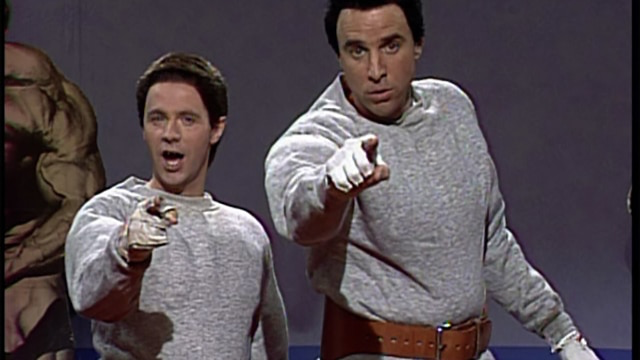Patient: “I need back surgery.”
Me: “You need to lose weight before it will safe for you to have back surgery.”
Patient: “I can’t lose weight because I can’t exercise.”
Me: “Well how much are you eating a day?”
Patient: <<blank stare>>
I’m taking a break from the technical posts so that I can go back on my soap box for just a bit. I want to talk more about obesity and spine surgery. A couple of years ago (for the very dedicated Spinal (con)Fusion readers) I wrote a post about a gentleman who put in a ton of effort to lose weight prior to his fusion surgery. Not only did he get his surgery and do well, but he also saw significant improvement (and in some cases, resolution) of his other chronic medical conditions. Simply, by no longer being obese this patient completely changed his life.
I think about this patient often when I’m considering surgery on a patient. Thankfully there have been many more success stories like his since then. As I said in that article, my job as a doctor is to care about your overall wellness, not just the structural abnormality in your spine. I’ve taken great pride in seeing the incredible results in patients that have been successful in losing large amounts of weight, either with bariatric surgery or with intensive lifestyle changes. Frankly, it’s awesome to see the pride and joy on their faces when they tell me how much weight they’ve lost.
For all the success stories, though, there are as many patients who tell me they just can’t lose weight. Before getting to them, I’ll tell you about myself. Just prior to the birth of my first son 6 years ago I was almost 40lb heavier than I am now. I saw a video of myself and realized I needed to make a significant change in my life or I was never going to be able to be the father that I wanted to be. Also, my back hurt! Duh! (It’s still remarkable to me when patients don’t see the connection between their obesity and back/hip/knee pain, by the way.) Thankfully since then I’ve been able to slowly but surely get down to a healthy weight (I was technically obese 6 years ago.) On one hand this has allowed me to better empathize with my overweight patients. Losing that weight took a lot of hard work so I don’t take it lightly when a patient tells me it’s a struggle. On the other hand, I now know that, in fact, losing weight is simple (I’m not saying easy). You just have to maintain a calorie deficit. This is done either by burning more calories, taking in less calories or, ideally, a combination of both. Don’t tell me you can’t do that!
“Well how many calories do I need a day, Dr. Thomas?” Glad you asked. Prior to embarking on any weight loss journey you really need to know your total daily energy expenditure, or TDEE. Your TDEE is a measure of your total daily caloric needs based on your age, height and weight (your Basal Metabolic Rate, or BMR) which is adjusted based on your activity level. It basically indicates how many calories you need at baseline to live and maintain your current weight. Once you know your TDEE you can then plan your daily calorie intake so that you maintain a caloric deficit. With some experience you can get pretty dialed in on this based on how fast you want to lose weight. Want to lose a half a pound a week? Set a moderate calorie deficit. Wanna be aggressive and lose 1.5lbs a week? Set a higher deficit. It’s not advisable (read: it will be miserable) to try to lose more than 1-1.5lbs a week. Remember, you want to set a deficit that won’t be so miserable that you won’t stick with it. Plan for the long game and set a reasonable deficit for yourself—no more than 20% of your TDEE, for example. It may not sound like much but if you lose just 1 pound a week you’ll lose almost 30lbs in 6 months! A simple online TDEE calculator can be found here.
Ok so now you know your TDEE and you how much of a calorie deficit you need to lose weight. How did I maintain a calorie deficit? Like I said, increased calorie expenditure and decreased calorie intake. First, I started exercising just about every day of the week: increased expenditure. My exercise routine is based primarily around resistance training with weights with supplemental cardio exercise (swimming is my preferred form.) It’s beyond the scope of this post to talk about specifics of a weightlifting routine for weight loss (and frankly I don’t know that I’m qualified to do so). Simply put, though, when you pack on some muscle through resistance training you will maintain a higher basal metabolic rate (BMR) so that you burn more calories at baseline compared to if you were to do cardio exercise only. Put another way, you’re more likely to be in a calorie deficit if you’re having to feed more muscle. The problem is it’s hard to exercise when your back hurts! It’s a terrible cycle: you can’t exercise because your back hurts, you gain weight because you can’t exercise and your back hurts more. I completely understand. Even the slightest bit of movement helps though. Go for a walk outside. Take the stairs. Ride a bike. If these activities cause pain find a pool and do some water aerobics. Just get moving.
I really don’t want to sound paternalistic about exercising (see figure 1). It’s difficult to start exercising when you’re in pain and it’s discouraging when you’re having a hard time starting. I get it. Thankfully there’s another side to the weight loss equation: calorie restriction. In my opinion, this is not only the more important part of the equation, but also the more attainable. Prior to my weight loss I always did some baseline level of weightlifting and cardio. I was still overweight though. Why? IPAs mainly, and the fact that I really had no idea what I was putting into my body. What really made the difference for me is when I started tracking my food. You must take in less than you’re burning to lose weight: limited intake. There is no way you can do that without tracking everything you put in your body day in and day out.
This sounds like a pain in the butt to do but thankfully these days there are several apps that make it very simple. I’ve used two apps: LoseIt and My Fitness Pal. Both are excellent (with both free and paid versions) and will learn what you eat so that tracking becomes much easier the longer you do it. You can literally set your weight loss goal and the time you want to achieve that goal in, and the app will do the rest.

Figure 1: These guys were definitely paternalistic about exercise.
Once you’ve tracked your food for several months you’ll start to get a sixth sense about appropriate portion sizes and about what you should and shouldn’t eat. And while you technically can lose weight by eating Ho-Hos and pizza as long as you’re in a calorie deficit, it’s not recommended. The quality of your food matters. Stick with natural whole foods and stay away from the processed stuff. Eat the stuff from the outside aisles at the grocery store and stay away from stuff in the middle! Watch your protein intake too. Remember that your muscle mass acts like a metabolic furnace to help you burn more calories and if you don’t take in enough protein when you’re cutting calories you’ll lose muscle too. You should maintain a protein intake of at least 0.5-0.75 grams of protein per pound of body weight (even more if you’re trying to build muscle.)
There you go. Now you can’t tell me it’s just too hard to lose weight. It really is as simple tracking your food intake so that you can maintain a calorie deficit. Burning more calories with resistance training is important too but remember weight loss happens in the kitchen, not the gym! Set reasonable goals for yourself and go out and achieve them! You don’t have to be great to start but you have to start to be great (thanks Toyota Olympics commercial!!)
Thanks for reading!
J. Alex Thomas, M.D.
P.S. I learned just about all this information from a book called Burn the Fat, Feed the Muscle by Tom Venuto. You really can’t go wrong with this book. The online community for the book can be found here.
